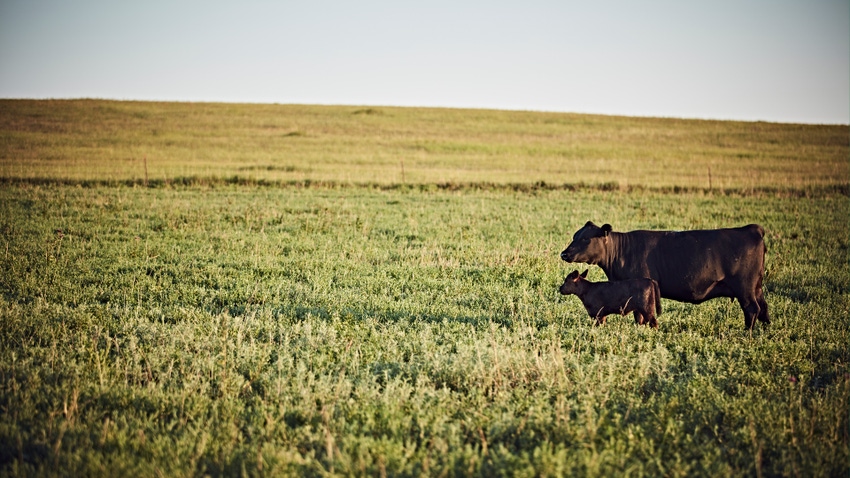Welcome to Health Ranch, where you can find information and resources to help you put the health and well-being of your cattle at the top of the priority list.
Capture uninterrupted immunity by vaccinating calves earlier
Build calf immunity against disease like bovine respiratory disease sooner by vaccinating as early as 30 days of age.
April 1, 2024

“In the first six months of life, there are two things I like to emphasize,” said Joe Gillespie, DVM, Boehringer Ingelheim. “They are the need for calves to have good colostrum on that first day, and the necessity of proper vaccination.”
Born completely naïve to disease, maternal antibodies from colostrum are a calf’s first defense against pathogens. But those antibodies only last for so long, which is why early vaccination is a crucial step in attaining uninterrupted immunity against illness like bovine respiratory disease (BRD).
BRD has a significant impact on both an animal’s production potential and a producer’s bottom line. While vaccination remains one of the most effective ways of preventing losses associated with BRD, Gillespie shares how useful vaccinating young calves can be for building strong immunity and a healthy herd.
Building blocks for calf health
“When calves receive colostrum from their dam, it’s like giving them one bucket of antibodies,” explained Gillespie. “They only get one bucket. Once that colostrum-derived bucket is empty, the only way to develop new antibodies is to activate the calf’s own immune system.”
Maternal antibodies gradually wane over the first few months of a calf’s life. Somewhere before that bucket hits zero is when calves need extra immune support through vaccination. A vaccine will stimulate a calf’s immune system to produce new antibodies, ensuring that bucket stays full and ready to fight disease-causing agents.
“We need to make sure we protect that calf somewhere in that window before the colostrum antibodies are gone,” said Gillespie. The time between gaining and losing maternal antibodies varies from calf to calf, but is typically somewhere between two and six months of age.
“If those antibodies go away before we offer a vaccination to stimulate the immune system, we run the risk of natural exposure to a pathogen that can cause disease,” continued Gillespie. “The key is finding a vaccine that won’t receive interference from maternal antibodies.”
Tools to establish immunity early
Maternal antibodies have the potential to recognize vaccine antigens as foreign, and neutralize them, which is why vaccines are often not recommended until the calf is a few months old. However, it’s now clear that the right vaccine can work in the presence of maternal antibodies and stimulate a robust and lasting immunity at an earlier age.
In a study, 30-day-old calves, with maternal antibodies present, were vaccinated with a unique adjuvanted 5-way plus Mannheimia haemolytica modified-live virus (MLV) injectable vaccine protocol or an intranasal and injectable vaccine protocol. Five months later, both groups were challenged with bovine viral diarrhea virus (BVDV) Type 1b, the most prevalent strain of BVDV in the United States,1 and M. haemolytica.
Results showed the 5-way plus M. haemolytica MLV vaccine protocol provided a stronger immune response against BVDV Type 1b and M. haemolytica. It also decreased the level of BVDV shedding and kept rectal temperatures lower for several days compared to the intranasal and injectable vaccine protocol.2
"We are able to vaccinate calves with a modified-live virus vaccine as early as 30 days of age and get a solid immune response because of that adjuvant,” stated Gillespie.
Not all respiratory vaccines are the same. Gillespie suggests working with your herd veterinarian to solidify a vaccine protocol that best fits your operation’s needs.
Planning for herd success
Building robust immunity composed of both maternal and vaccine-derived immunity is a vital step in a successful holistic BRD management strategy.
“I always recommend producers develop a plan before the calf is born, and figure out what will set that calf up for success in this production cycle,” concluded Gillespie. “Working with the herd veterinarian will make sure that producers are doing what’s best for their particular production system, for the region they live in, and will give them a better idea of what pathogens they need to protect against.”
References:
1 Fulton RW, Cook BJ, Payton ME, et al. Immune response to bovine viral diarrhea virus (BVDV) vaccines detecting antibodies to BVDV subtypes 1a, 1b, 2a and 2c. Vaccine 2020:38(24);4032–4037.
2 Oines-Perkins S, Dias N, Krafsur G, et al. The effect of neonatal vaccination for bovine respiratory disease in the face of a dual challenge with bovine viral diarrhea virus and Mannheimia haemolytica. Vaccine. 2023;41(19):3080–3091.
©2024 Boehringer Ingelheim Animal Health USA Inc., Duluth, GA. All Rights Reserved. US-BOV-0039-2024
You May Also Like

